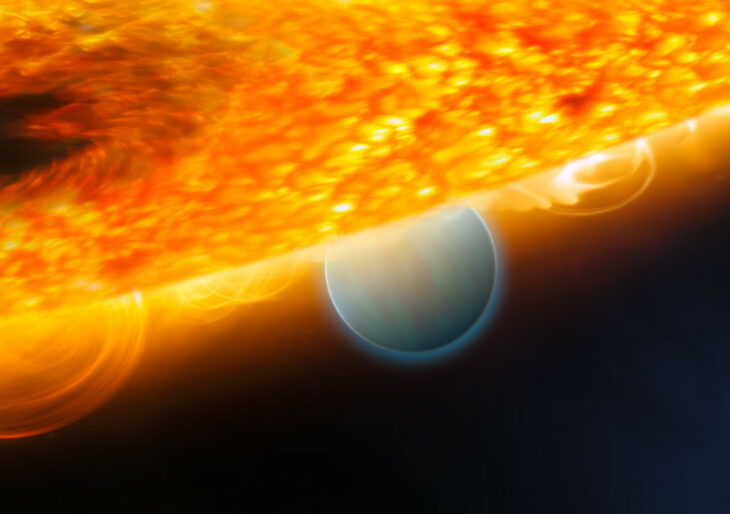The list of planets used to be quite short, consisting of 8 not counting Pluto. These were Mercury, Venus, Earth, Mars, Jupiter, Saturn, Uranus, and Neptune, and primary school students learned mnemonics like “My Very Educated Mother Just Served Us Nachos” to memorize them. But the list has grown considerably since 1992 when the first planet orbiting another star was discovered. These new exoplanets include PSR B1257+12 b, 51 Pegasi b, and over 7,000 more, far too many for students to memorize.
Scientists compare exoplanets by measuring their temperatures, orbital speeds, compositions, and more. But a distinct pattern emerges when astronomers compare exoplanets by mass and distance from their host star. Notably, they find a dearth of planets roughly between Earth and Jupiter in mass that orbit very close to their host star, or less than 5% of the distance at which Earth orbits the Sun.
Astronomers refer to this absence of mid-sized exoplanets in close orbits as the Neptunian desert. Typical exoplanet detection methods favor large planets and those close to their host star. This means the Neptunian desert is unlikely to reflect observational biases. Instead, these observations suggest that Neptune-sized planets close to their star, known as hot Neptunes, make up only around 3% of all exoplanets.
Scientists continue to debate why hot Neptunes are so rare, but the leading hypothesis pertains to how large planets change over time. They’ve suggested that if a gaseous planet is too large, it will accumulate more mass, eventually ballooning to a size comparable to Jupiter. However, if it is too small, the starlight will evaporate its outer gas layers, leaving a rocky core closer in size to Earth.
A team of Argentinian scientists found 2 new exoplanets in the Neptunian desert using observations from the Transiting Exoplanet Survey Satellite or TESS. The “Transiting” in TESS gives a hint as to how the scientists confirm a detection. If an exoplanet’s orbit is at the correct angle relative to Earth, then at times the planet will appear to move in front of its star, or transit. When this happens, the light from the star dims proportionally to how big the exoplanet is compared to the star, such that a bigger exoplanet blocks out more light. So, the scientists used transit data to calculate the sizes, orbital periods, and orbital distances of these 2 exoplanets. They verified their observations with ground-based telescopes to determine how much mass the exoplanets have.
The astronomers found that the new exoplanets, named TOI-2374 b and TOI-3071 b, revolve around stars 70% and 130% as massive as the Sun. They explained that these exoplanets are so close to their host stars that it only takes TOI-2374 b a little over 4 days to make a complete revolution and TOI-3071 b less than a day and a half. In terms of mass, they estimated TOI-2374 b is 56 times the mass of the Earth, and TOI-3071 b is 68 times the mass of the Earth.
The team explained that TOI-3071 b is also unusual because it has the highest equilibrium surface temperature of any known similarly-sized exoplanet, at 1812 Kelvin (about 1500°C or 2800°F). At that exoplanet’s size and temperature, the prevailing wisdom would suggest it should have more or less evaporated away.
The researchers also found that both exoplanets are disproportionately rich in elements other than hydrogen and helium, which astronomers refer to as metals. TOI-2374 b and TOI-3071 b have twice the fraction of metal in their compositions as Saturn. They went on to explain that previous models of planetary evolution would not have predicted that gaseous, metal-rich exoplanets like these exist. The team suggested that these 2 exoplanets absorbed smaller rocky objects early in their lifetimes that enriched them with metals but halted their growth into gas giants.
The team speculated that both small exoplanets reached a stable mass rather than evaporated due to their high metal content. They explained that metals require more energy to evaporate than hydrogen and helium, so the heavy elements could shield the exoplanets like sunscreen, protecting the gas-rich outer layers. The astronomers concluded that TOI-2374 b and TOI-3071 b would make great candidates for JWST observations so future scientists could learn more about the unexplored reaches of the Neptunian desert.


